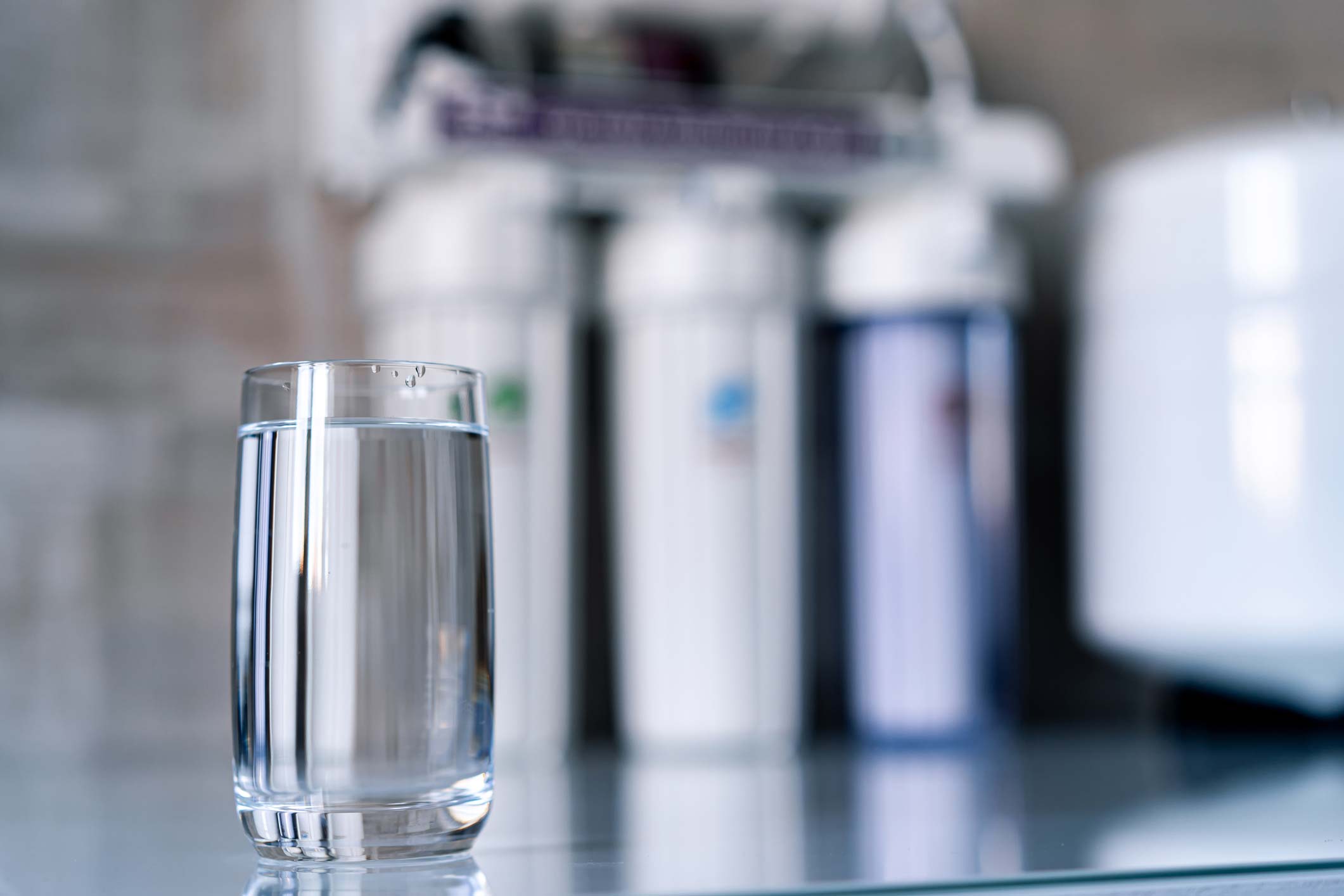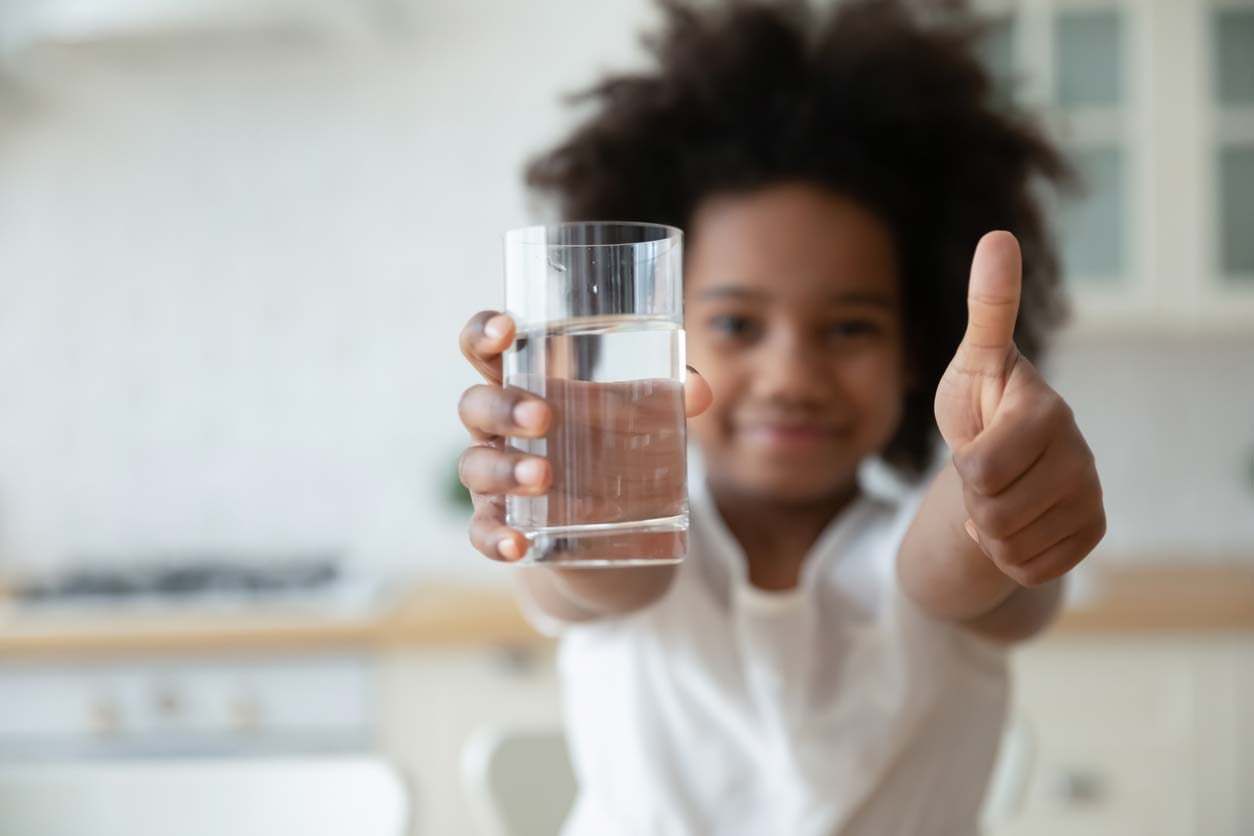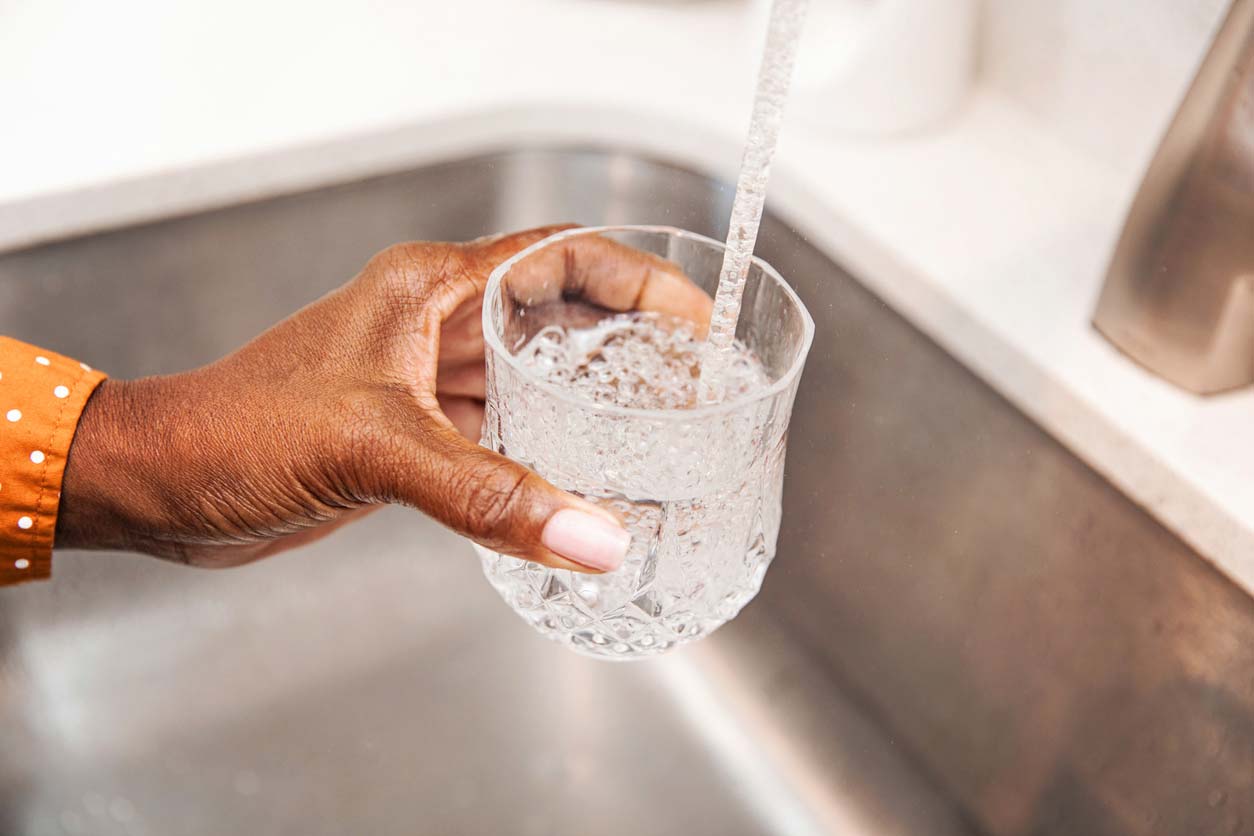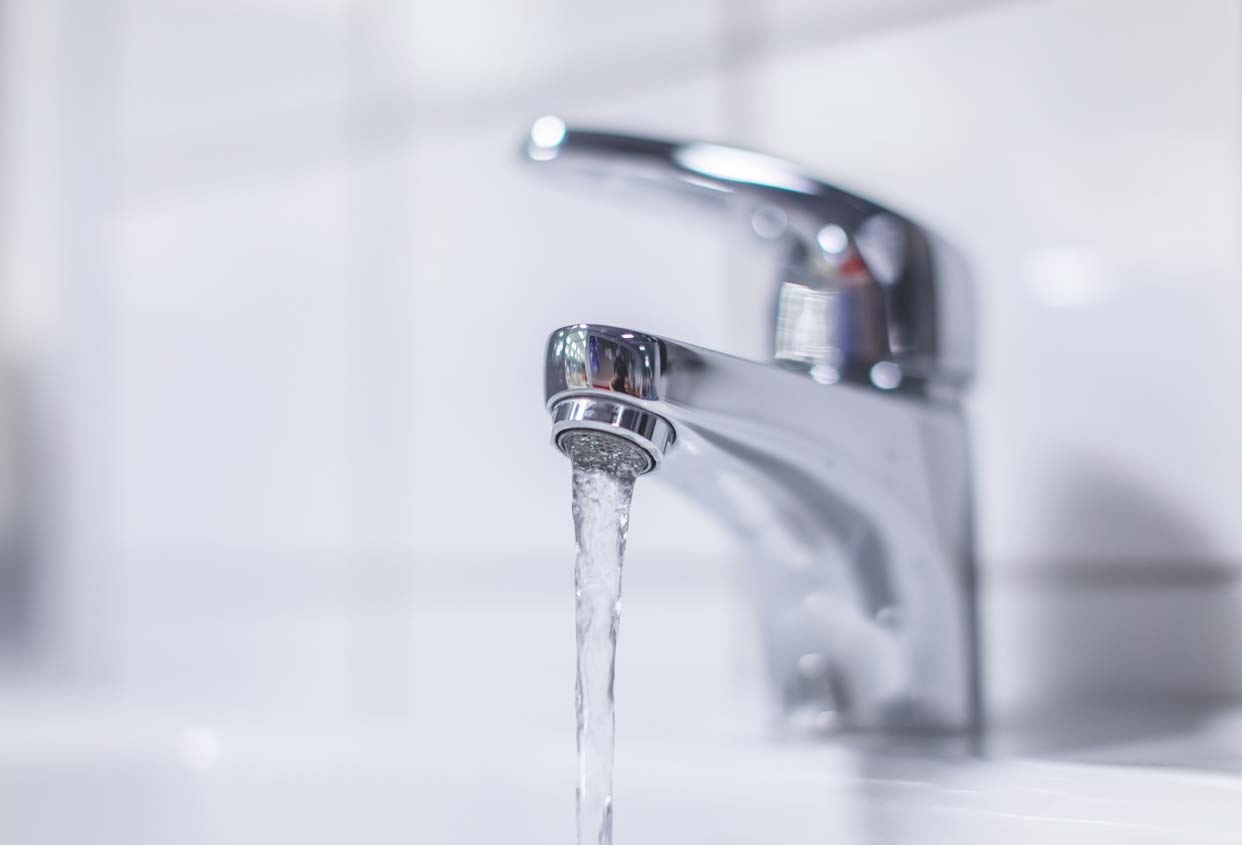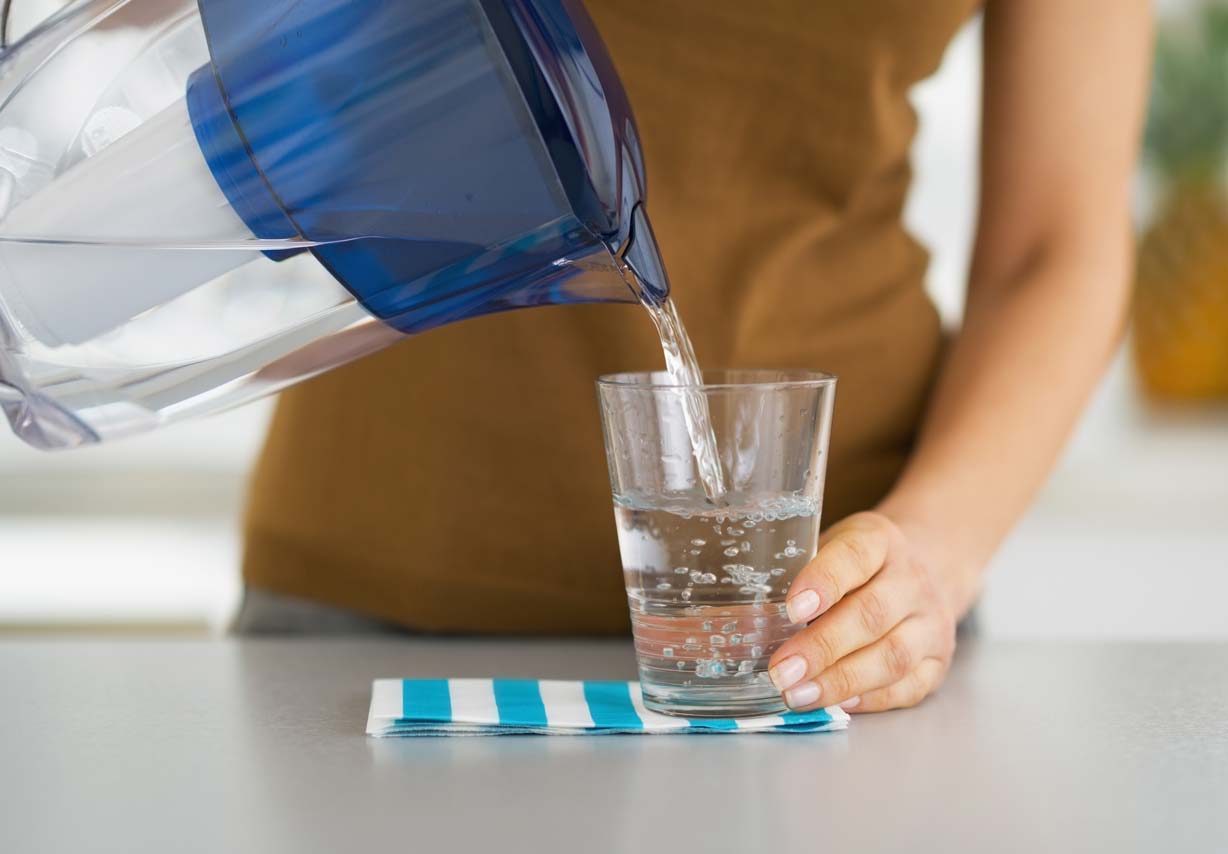In movies about space, what’s the first thing scientists try to find out about a moon or planet that may support human life? No, it’s not whether DoorDash delivers. It’s, “Is there water there?”
In October 2020, NASA’s Stratospheric Observatory for Infrared Astronomy (SOFIA) found water on a sunlit surface of the moon. A month earlier, the European Space Agency’s Mars-orbiting spacecraft, Mars Express (I guess it goes straight there without making stops on the moon, Mercury, or Venus), confirmed the presence of an underground lake and discovered three others.
This interest makes sense; no water, and it’s hard to imagine a colony of humans having much fun surviving on these non-terrestrial locations.
Not only do we need water, we are water. Our bodies are 60-70% water, which also happens to be the percentage of the Earth’s surface that contains water. This is perhaps more than mere coincidence because water quality has a direct impact on health at both the individual and ecosystem levels.
Without water, life could not exist on Earth. Land animals (humans included) don’t just need water; we need fresh water. Considering that just 0.5% of all the water on the planet is fresh and available (i.e., not salty, and not in the form of ice), you’d think we’d be doing everything possible to keep this precious resource as clean and pure as possible.
But you’d be wrong. We’ve been polluting our waterways for a long time. And science is increasingly discovering the many negative effects of all this contamination. The bad news is that many of the chemicals coming out of our faucets are causing incremental, long-term damage.
In this article, we’ll explore why water matters so much, how it becomes contaminated, and, most importantly, what you can do about it.
The Benefits of Water
The simple truth is this: every single cell, tissue, and organ in your body requires water to function. It’s in everything you do, think, and experience.
Without water, your body wouldn’t be able to:
- Deliver oxygen
- Digest food
- Maintain brain function
- Receive nourishment
- Flush out toxins
- Regulate temperature
- Or protect your vital organs…
From hydration to cellular repair to sweeping out your colon, water is an essential service provider that you couldn’t do without. And both the quality and quantity of your aqueous intake play a role in shaping your overall health. That’s why the United Nations General Assembly in 2010 recognized access to safe, clean drinking water as a protected human right.
The basic biological need for clean water is unquestionable.
In fact, scientists recognize that water is quantitatively the most important “nutrient” — as good hydration not only allows your body to function but can also prevent various forms of chronic disease. Research has shown that even mild dehydration, if not alleviated, can account for an increased risk of cognitive decline, dementia, and morbidity.
According to the US National Academies of Sciences, Engineering, and Medicine, the ideal daily fluid intake is about 124 fluid ounces a day for men (almost 16 cups) and 92 fluid ounces for women (almost 12 cups). But that is just a very general guideline. People who eat lots of fruits and vegetables don’t need to drink as much water as people who eat burgers and fries since their food provides substantial fluid intake. And people who exercise a lot and/or live in hot climates typically need more water as well. But we all need to make sure we’re getting enough.
Is Your Water Clean?
Don’t underestimate the importance of water. We owe our lives to it! And beyond the innumerable services it provides to human bodies, clean water is also a planetary concern. Because what we put in our bodies will eventually wind up in our watersheds, our soil, and our food. (Cue the “Circle of Life” chorus.)
But how do you know if your water is safe to drink? We can’t take water for granted.
For many of us with municipal water sources, it’s sometimes easy to assume that what comes out of our faucets is safe. But science says that we can’t simply trust the tap. That’s especially true for children, the elderly, and people with compromised immune systems who may be more vulnerable to certain common pathogens.
Water Contaminants
The US Environmental Protection Agency (EPA) regulates a total of 90 contaminants in American drinking water. But there are many chemicals and toxins in water worldwide that we now recognize as harmful — and that regulators simply don’t look for (which means they go undetected and unregulated).
Some of the most concerning contaminants to look out for include the following:
- Lead is one of the most common contaminants found in municipal water as it is a byproduct of corrosion in pipes, fixtures, and faucets. It poses a particularly high risk to children and expectant mothers.
- Chromium-6 is a cancer-causing chemical found in the tap water of all 50 US states. Currently, only California has regulatory limits imposed on this toxic mineral.
- Chlorine is the most commonly used chemical for water treatment in the US. Chlorine does a great job killing bacterial pathogens, but unfortunately, it can produce toxic and carcinogenic byproducts like chloroform when added to drinking water.
- Fluoride added to our drinking water is touted as being beneficial to our dental health. But it’s controversial. Research conducted by the Cochrane Collaboration in 2015 suggests that this chemical can have a toxic effect on brain and nerve cells. Additional research tells us it may contribute to thyroid problems. For more on the controversy, click here.
- Pesticides used as agricultural treatments not only contaminate the crops, but also our soil and groundwater. Rural areas are particularly at-risk for pesticide contamination.
- PFASs (perfluoroalkyl and polyfluoroalkyl substances) are also known as “forever chemicals” as they can take hundreds or even thousands of years to break down naturally in our environment. Used in the manufacture of non-stick pans and waterproof materials, they also persist in the human body and can pose serious long-term health risks.
- Nitrates can occur naturally in surface and groundwater but reach toxic levels from chemical fertilizers, industrial feedlots, processing waste, and septic seepage.
- Microplastics are ubiquitous in our environment and end up in marine water, freshwater, wastewater, and drinking water — these plastics can accumulate in our tissues, and the extent of their impact on human health is not yet known.
This is by no means a comprehensive list — and you may find that the threats to your water quality are unique to your home or region. But there are steps you can take today to protect yourself from these common pollutants in your drinking water.
How to Ensure You Have Clean Water
While bottled water may, at times, seem like a convenient or clean option, the truth is that it may do more harm than good. Single-use plastic bottles are polluting our oceans and air, killing wildlife, and exposing us to harmful chemicals like phthalates and BPA.
Not only do plastic bottles pollute our soil, air, and water, but there’s a decent chance the water they contain actually comes from the tap. Scientist and activist Peter Gleick researched the origins of the most common brands of bottled water and discovered that up to 45% of bottled water contains the same stuff that consumers get from their kitchen sinks — albeit treated to remove most contaminants.
No matter where your drinking water comes from, the surest way to determine the quality is to test it. If you use a municipal water system, you can ask your water utility supplier to provide an annual quality report that may shed some light on your quality concerns.
The EPA requires that local water agencies provide Consumer Confidence Reports to customers by July 1 of each year. If your water comes from a private well or spring, you will need to have your water tested annually.
You can find affordable, at-home test kits online, although they aren’t always the most reliable and may not test for every concerning contaminant. The majority of these kits test on a pass-fail system, reporting only if concentrations of individual contaminants reach a certain level. They won’t tell you anything about absolute levels of contamination in your water.
To get the most accurate information on what’s in your water, you can send a sample to a certified testing lab. These laboratories can detect trace amounts of chemicals from a wide range of possible pollutants. But be warned: a comprehensive lab-certified water analysis isn’t cheap.
Water Treatment Systems
On the other hand, it’s hard to put a price on health. And if you do plan on treating your water in some way, you have to pay for those systems as well. It can make good sense to determine what’s in your water, so you can then choose the most appropriate and cost-effective treatment option.
Given how little control you have over the quality of the water that enters your home, whether from a municipal treatment plant, a well, or even a spring, your best option for clean, healthy drinking water that is good for you and kind to the environment is a home water treatment system. By installing such a system, you can take direct control of your water quality and ensure what you’re drinking is safe.
Point of Use Filtration Systems
Water purification goes back a long way. Researchers have uncovered ancient Mayan water filtration systems that used quartz and other minerals to remove pollutants from municipal city water more than 2,000 years ago. Water treatment has evolved a great deal over the millennia. For one thing, it’s become much more compact.
Modern ‘point of use’ (PoU) filtration systems can treat water in small batches, so you have healthy hydration on-demand. Some sit atop your counter, and others can be mounted under your sink for delivery through your tap or an auxiliary faucet.
And depending on your needs or specific water type, there are many options to choose from — so here’s a primer on what to look for.
Carbon Water Filters
Carbon filters are the most common type of PoU water treatment available today. They’re among the most affordable, and the simplest to operate. Solid block carbon filters contain compressed activated carbon formed from a combination of heat and pressure. Granular activated carbon filters, on the other hand, have loose granules of carbon that look something like black grains of sand. In each case, the water passes through the carbon, removing impurities. There are many types of carbon systems — including countertop reservoirs and under-sink models — which can accommodate various needs. But carbon water filters vary greatly in their effectiveness.
Simpler, more affordable carbon filters, like those used in Brita and similar pitcher filters, will use gravity to pass water through granulated activated carbon. These types of filters are effective in removing chlorine and improving taste.
More advanced carbon block filters — like those in the Berkey countertop water filter — have greater surface area and can effectively treat water for contaminants like asbestos, lead, mercury, and volatile organic compounds (VOCs). (The Berkey goes a step further than most, by also promising to remove bacterial contamination. Find out more about it here.)
Pros & Cons of Carbon Filters
- Pros: A good quality carbon filter can quickly and easily remove many contaminants, including some heavy metals like cadmium, copper, and mercury, at a reasonable price point. Oftentimes, the gravity-fed models don’t require any installation or modification to your existing plumbing, and some can even fit inside your fridge.
- Cons: Not all carbon filters will remove common “inorganic” pollutants, such as arsenic, fluoride, hexavalent chromium, nitrate, and perchlorate. Carbon filters can also get clogged with toxins over time, so changing the cartridges regularly is essential. And with the notable exception of the Berkey, most carbon filters do nothing to address any bacterial contamination (which is more likely to be a concern if you use your own well or spring water).
Ultraviolet (UV) Water Systems
Ultraviolet (UV) light emitted from LEDs or other bulbs has a disinfectant effect by neutralizing bacteria and viruses found in water. Occurring naturally in sunlight, UV rays are a safe alternative to chemicals for targeting pathogenic microorganisms (a fancy name for invisible critters that can threaten your health).
UV treatments are widely used in pharmaceuticals, cosmetics, electronics, and beverage manufacturing. And because the technology is rapidly developing, there are a growing range of applications for UV treatment; ranging from whole-house systems to water bottles that claim to treat on-the-go. (The LARQ bottle is one such breakthrough. It’s a UV-purifying water bottle that’s especially useful in communities with tap water that’s bacterially contaminated. Find out more about it here.)
But can you really trust a light bulb to make your drinking water safe?
Although science has proven that UV filters are effective in acting against waterborne pathogens, UV rays cannot change the physical properties of water — which means that many pollutants can be left behind.
Pros and Cons of UV Systems
- Pros: Ultraviolet light can kill bacteria and microorganisms without any harmful secondary effects. UV systems are easy to maintain and are much healthier than chemical germicidal treatments.
- Cons: Unless you also filter your water, a UV treatment system will not remove pollutants like pesticides, lead, or chlorine, nor will it remove dissolved solids that affect clarity and taste. Additionally, these treatment options require some form of electricity to operate.
Distillation Water Treatment
Distillation is a tried-and-true method that people have used to purify water for thousands of years. Less commonly used as a home water filtration system, distillation is a process that relies on evaporation to yield results — which has its strengths and weaknesses.
Contaminated water is heated to a boiling point that kills microorganisms and forms steam. Inorganic compounds and large non-volatile organic contaminants do not evaporate and are left behind as the vapor condenses into purified water.
Pros and Cons of Distillation
- Pros: Distillation can effectively remove lead, chromium 6, chlorine, and many bacteria and viruses present in our water. It is also effective in treating foul-tasting water or water that is cloudy with sediment.
- Cons: Distillation systems require a significant amount of time, energy, and counter space to operate. They’re also incapable of removing some volatile organic compounds (VOCs), yielding mixed results in addressing pesticides and drug residues. Furthermore, distillation removes all the minerals from water, which can affect the taste.
Reverse Osmosis Systems
Utilizing multiple steps of filtration, reverse osmosis (RO) water treatment systems pressurize your water to push it through what’s known as a semipermeable membrane — which is really just a bouncer for molecules larger than H20. As source water makes its way through the membrane, contaminants are filtered out and flushed away — leaving you with clean, delicious drinking water.
Most commonly, RO systems are mounted under your sink and will dispense straight out of a special faucet — giving you on-demand purified water. Other options include countertop filtration stations and whole-house treatment systems that incorporate large holding tanks.
Because RO can remove the vast majority of chemical contaminants and neutralizes most biological threats, it is often considered to be something of a gold standard for home water filtration systems. Though depending on your budget, space, or water quality concerns, it may not be the best option for you.
Pros and Cons of Reverse Osmosis
- Pros: Reverse osmosis comprehensively removes organic chemicals such as arsenic, lead, fluoride, and chromium 6. Furthermore, a high-quality RO system will have an activated carbon block pre-filter that can remove volatile organic compounds like pharmaceutical residues and pesticides.
- Cons: RO systems may remove some bacterial contamination, but if your water has dangerous pathogens in it, then you should treat it with chlorine or UV prior to sending it to your RO system. (If you are using municipal tap water in an industrialized country, this is probably not a concern.) Many RO options are expensive and may require professional installation and routine maintenance. And they are comparatively inefficient to other methods — sometimes wasting as much as four gallons of water for every one gallon of clean water created.
On the con side, the AquaTru stores water in Tritan plastic — though you can easily transfer the water to glass or stainless steel pitchers after filtration.
The manufacturer, AquaTru, states that their home water treatment system removes fluoride as well as chromium 6 and a great many other contaminants from your tap water. It’s available now for a $100 discount; if you’re interested, you can find out more here.
Water Improvement Options
Beyond filtration and purification, there are also some popular options for optimizing and improving your drinking water for maximal health benefits.
Some people are very enthused about alkaline water and hydrogen water systems. Proponents make big claims about both methods. And they come with big price tags.
Both alkaline and hydrogen water allegedly have anti-inflammatory, anti-aging, and performance-boosting properties. But what does the science say?
Alkaline Water
Normal drinking water generally has a neutral pH of 7. Alkaline water systems modify the pH of water — typically to a pH of 8 or 9.
Proponents of alkaline water tell us that it can neutralize acidity in your body. And some say it can even help slow the aging process, balance your body’s pH levels, strengthen your immune system, and prevent chronic diseases like cancer.
These and many other benefits are claimed by high-priced alkaline water products — and usually, the claims come from people who are selling them. But there isn’t a terrible amount of evidence to back up the claims.
According to registered dietitian and nutritionist Kelly Nohl: “Most of the time, your blood maintains a pH of 7; it falls right in the middle of the pH scale. What you eat and drink only alters the pH of your urine. So when you drink alkaline water, you’ll change the pH of what’s in your toilet bowl, not your blood. Plus, when the alkaline water you drink hits your stomach, the acids in your gut neutralize it. So essentially, you’re paying a lot of money to drink something that won’t affect your body’s acidity.”
To be fair, there may yet be studies performed that do find some as-yet-unconfirmed benefit to alkalizing water ionizing systems. And there are plenty of anecdotal stories of “miracle cures” and other purported benefits. But it’s entirely possible that consumers are simply drinking more water on account of their new high-priced alkaline water system, which could have led to any perceived benefit.
So Should You Drink Alkaline Water?
There is thought to be little if any danger to drinking alkaline water, though, so if you don’t mind the price tag, it’s unlikely to cause harm. That said, there is one brand of bottled alkaline water you might want to avoid. As of this writing, the U.S., Food and Drug Administration (FDA) has urged the public not to consume the branded alkaline water, Real Water, which has been linked to an outbreak of acute nonviral hepatitis. The company has issued a statement urging retailers to pull its products from shelves and return them to distributors.
Hydrogen Water
Hydrogen water is regular water that’s had extra hydrogen gas added to it.
And although more research is needed, there have been many studies suggesting that hydrogen water may give you more energy, reduce exercise recovery time, and even prevent oxidative stress.
Perhaps most significantly, there is evidence to suggest that the consumption of hydrogen-rich water may help in decreasing inflammation and treating chronic disease.
Skeptics might wonder if hydrogen water consumers are simply benefiting from drinking more water in general, too. After all, if they believe their water is “special,” will they also consume more of it?
Researchers put this theory to the test with a randomized, double-blind clinical trial. Forty-one study participants drank 1.5 liters of water per day. Half of them received hydrogen water, and the other half “regular” water. The study found that the hydrogen water drinkers showed significantly increased antioxidant capacity and reduced inflammatory responses.
The therapeutic antioxidant effect of hydrogen water has even been linked to an improved quality of life for cancer patients receiving radiotherapy.
Traditionally sold in bottles for hefty prices, you can also make your own hydrogen water at home with the right system.
Water for LIFE
Water is an essential part of life and health.
So ensuring you have clean, nourishing drinking water for yourself and your family is crucial to your well-being. But for many people, access to adequate quantities of safe drinking water is hard to come by. For those who can afford it, home treatment options can make a world of difference. And compared to drinking bottled water, home water treatment can save large amounts of money, while preventing extensive plastic pollution.
Depending on the quality and safety of your water source, and your budget, there are many factors to consider when determining the best water treatment option for you. UV systems can remove bacterial contamination. Carbon water treatment systems can remove chlorine and other basic contaminants. RO systems can remove a much wider array of contaminants. And for those who can afford it, adding hydrogen to your water may yield potentially significant antioxidant and anti-inflammatory benefits. Whatever you choose, having access to safe drinking water is not something to take for granted.
Don’t leave your water quality to chance! Take action today and start hydrating healthfully.
Tell us in the comments:
- Do you know where your water comes from?
- Which home water treatment systems have you used or considered before?
- What motivates you to improve your water quality?
Feature image: iStock.com/Vadym Terelyuk
